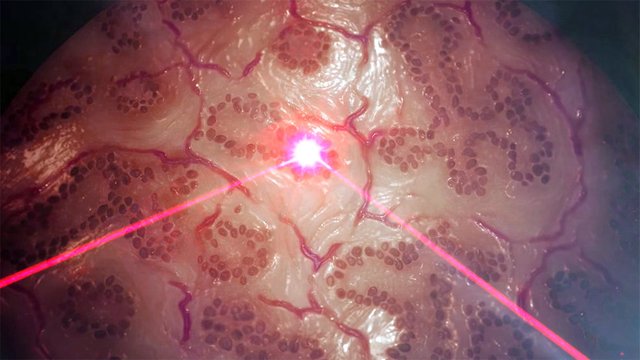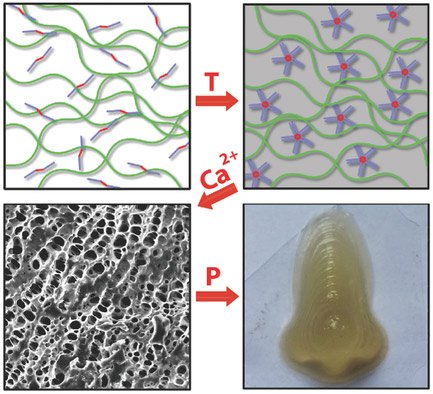First Ever 3D Printing of a Living Tissue with Stem Cell Bio-Ink

Scientists at the University of Bristol have developed a new kind of bio-ink. This discovery could allow the production of complex tissues for surgical implants. The new stem cell-containing bio-ink allows 3D printing of a living tissue, also known as bioprinting.
This bio-ink contains two different polymer-based components. One, extracted from seaweed, is a natural polymer. The other, used in the medical industry, is a sacrificial synthetic polymer. Both of these had a big role to play in the development of the bio-ink. The synthetic polymer alters the bio-ink from a liquid to a solid when its temperature rises. When cell nutrients are added the seaweed polymer provides structural support.
Dr. Adam Perriman, lead researcher from the School of Cellular and Molecular Medicine, stated that designing the new bio-ink was extremely challenging as it required a material that is printable and durable enough to maintain its shape if immersed in nutrients and does no harm to the cells. There was a lot of trial and error tests before they were able to formulate a working method.

An artist’s impression of a 3D living tissue bioprinting. (Image courtesy of University of Bristol)
The formulation of bio-ink was prepared for use with a retrofitted benchtop 3D printer, as it converts from a liquid to gel state at exactly 37°C (98.6°F). This allows for a complex assembly of living 3D structures.
The team was able to separate the stem cells into osteoblasts (a cell that secretes the bone material) and chondrocytes (a cell that secretes the matrix of cartilage and becomes nested in it). The whole engineering process of 3D printing tissue structures took five weeks, including a full-size tracheal cartilage ring.

3D living tissue printing with adult stem cells in a novel cell-containing multicomponent bio-ink is used in a two-step 3D printing process to engineer bone and cartilage architectures. (Image credits: Advanced Healthcare Materials Journal)
What they found impressive was, after the cell nutrients were introduced, the synthetic polymer was completely removed from the 3D structure. What was left out was the stem cells and the natural seaweed polymer, which created microscopic pores within the structure. These pores provided a more effective passage for the nutrients to enter the stem cells.
Findings could lead to the ability to print complex tissues using a patient's own stem cells. One of the application could be to print surgical bones and cartilage implants, which could one day be used as replacements in knee and hip surgeries.
The full study was published in Advanced Healthcare Materials journal.

Like what you read (without annoying ads :) ) ? Then please upvote our posts and follow us for the best daily science news on SteemIt!